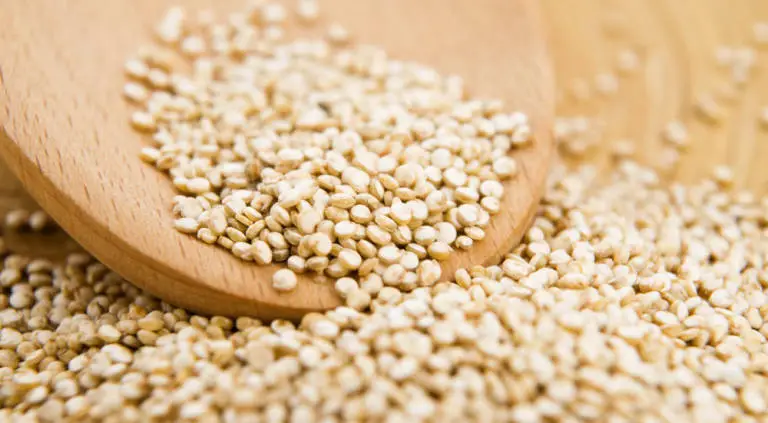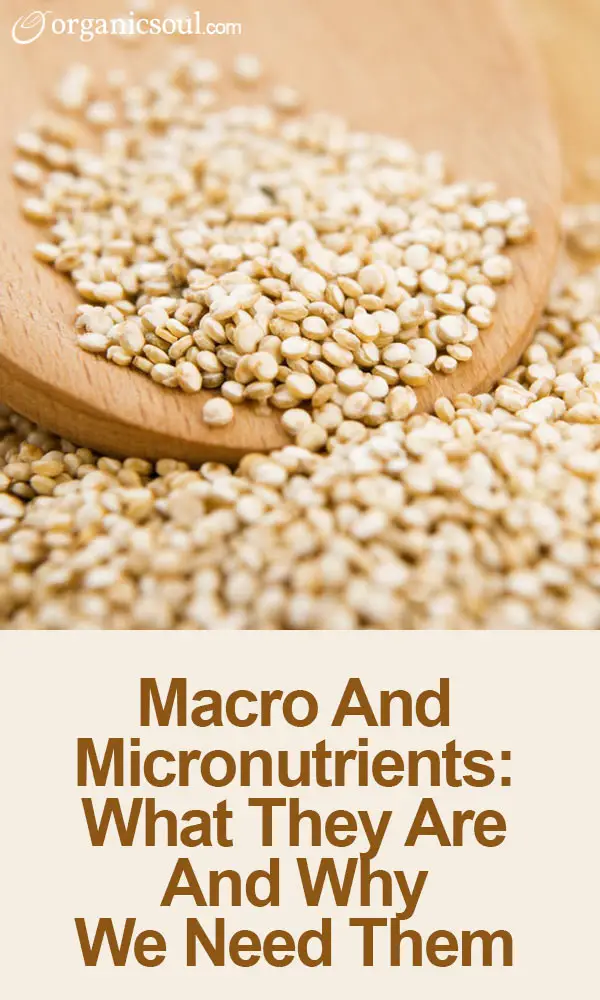
Everyone knows that it’s vital we get enough nutrients in our diets to survive and be healthy. We also know that different foods contain different nutrients. Some of us may even know that these nutrients are divided into two categories: micro and macronutrients. But what do these titles really mean, and what are the functions for each group?
Like Organic Soul on Facebook
The Nutrients Defined
Let’s start at the beginning. Nutrients, at their most basic definition, are chemicals that any living organism needs to continue their survival. They help give us energy to perform daily functions, as well as fuel to build tissues and grow. These nutrients, however, are broken up into two distinct categories.
First, macronutrients are substances that provide caloric value – calories – which are metabolized for energy. Macronutrients are called “macro” because we need them in large amounts and they are large in molecular standard: –macro literally means very large in scale, or in its Greek understanding, “big” or “far”. Essentially, we need more of these large nutrients, making them ‘macro’.
On the other hand, micronutrients are nutrients we need in smaller quantities: hence, –micro, which is Greek for “small”. These are just as important as macronutrients in the sense that we need them, but the key difference lies in the sheer amount of the nutrients we need to digest.
Why They’re Important: Macro
Macronutrients are vital for every function we perform in the body because they serve us with fuel for the body. Without that energy, our bodies would not be able to perform the constant upkeep required and we would eventually die.
We have three main macronutrients in our diet, each with their own caloric value. They are as follows:
Carbohydrate: 4 kcal/gm
Fat: 9 kcal/gm
Protein: 4 kcal/gm
Which Nutrients Are Most Important?
It is true that our bodies most prefer to burn carbs – they are smaller than fats, making them easier to burn, and fat performs special purposes with the construction of cells and gives our skin its elasticity. Because of this, the experts that devised the Pritikin diet suggest the following daily intake:
Calories from carbs – Recommended: 65-75% Consumed:40-50%
Calories from fat – Recommended: 10-15% Consumed: 30-35%
Calories from protein – Recommended: 15-20% Consumed:15-20%
As we can see, the recommended value is hardly representative of what people usually consume, leading to health risks like obesity. That is, however, another topic in and of itself.
In sum, let’s take a quick look at the reason why we need each macronutrient (special thanks to the McKinley Health Center for a straightforward list!):
Carbs: These are our main source of fuel; they are easily converted into fuel; our cells require the glucose of energy; the central nervous, kidney, brain, and muscles need carbs; they can be stored for later use; they help with intestinal health and waste elimination; and they are in many foods, making them easy to acquire.
Fats: fats help with normal growth and development; a great source of energy; helps with absorption of vitamins; provides cushioning for organs; help maintain cell membranes; and provide taste, consistency, and stability to food.
Proteins: proteins helps with growth, especially in children, teens, and pregnant women; tissue repair; immune function; the making of essential hormones and enzymes; providing energy when nothing else is available; and preserving of lean muscle mass.
Why They’re Important: Micro
Micronutrients, while in smaller quantities, are just as important for healthy living. When the body uses oxygen, it undergoes wear and tear. That wear and tear is a little something we call aging, and it can be destructive to our health (common sense, no?); you can think of this like biological rust. Micronutrients, which include vitamins – like Vitamin C, B, and E – and minerals – like Zinc, Magnesium, and Iron – help to safeguard our bodies.
One area of special importance is the brain. When our brain uses oxygen, it promotes the creation of free radicals. These can get out of control – as the name implies – and can cause damage to our cells. Antioxidants, in this case, are our saviors. Because free radicals are a normal occurrence in the brain, the regular “input” of antioxidants in your diet is vital. Free radicals are more “attracted” to antioxidants than cellular components, which means with the increase in antioxidants, you’ll be more protected from these free radicals.
Because our bodies do not manufacture all of the needed vitamins, and the ones they do are usually in insufficient amounts, we have to be vigilant with our diets.
Great Sources For Great Nutrition
When aiming at your desired levels of macro and micro nutrients, keep in mind some of the basic tents of a good diet. Eat plenty of vegetables, fruits, lean fatty meats, and nuts and grains – these contain a ton of vitamins and minerals like Vitamin A (carrots, spinach, milk, eggs), Folic Acid (asparagus, dark leafy greens), Iodine (seaweed, fish), Iron (lentils, red meats, leafy vegetable), and Zinc (eggs, buts, cereals, seafood), just to name a few.
I suggest starting a daily meal planner or consulting a nutritionist for extra direction in getting the most nutrition out of your diet. Above all, remember to avoid food high in fat content, salt, and sugars!













